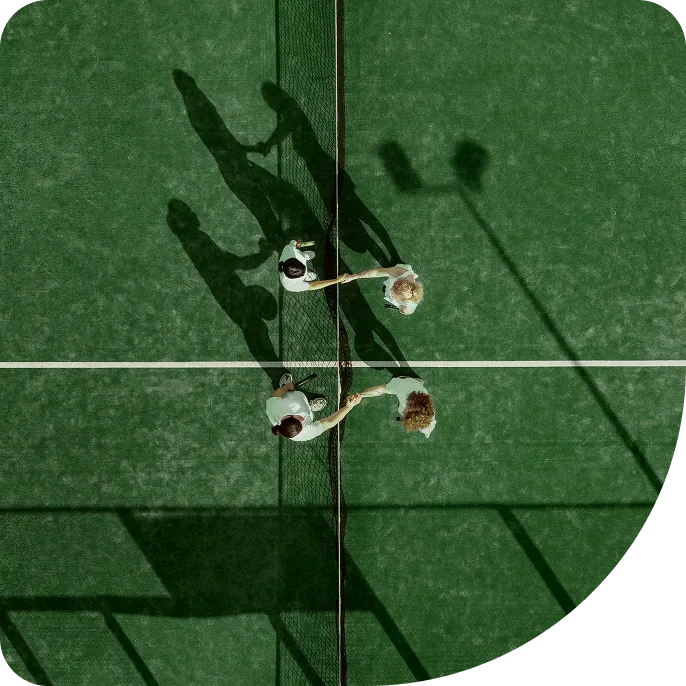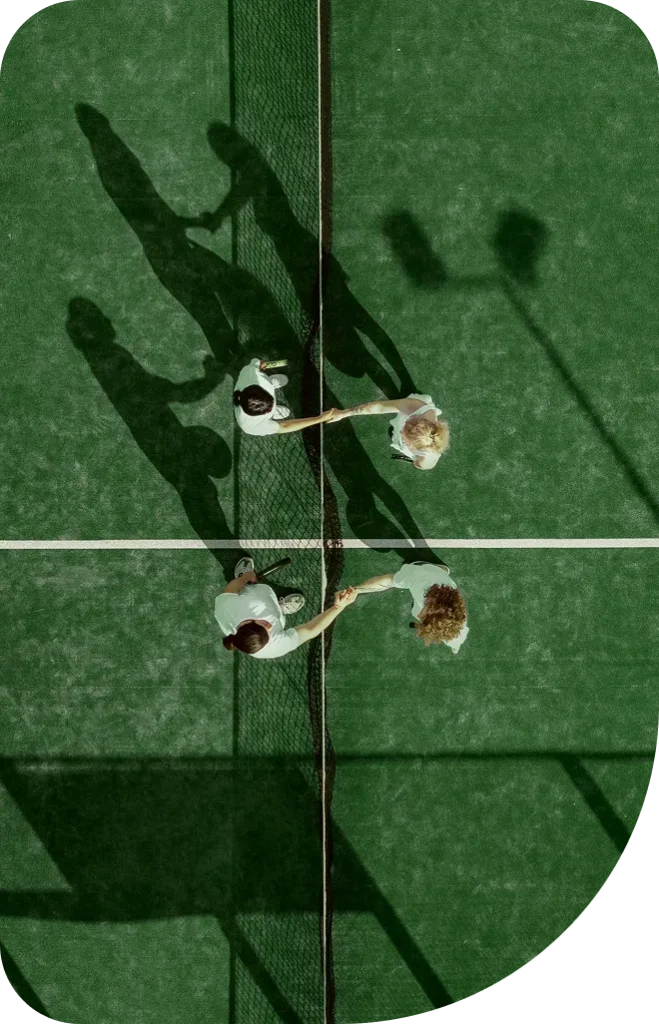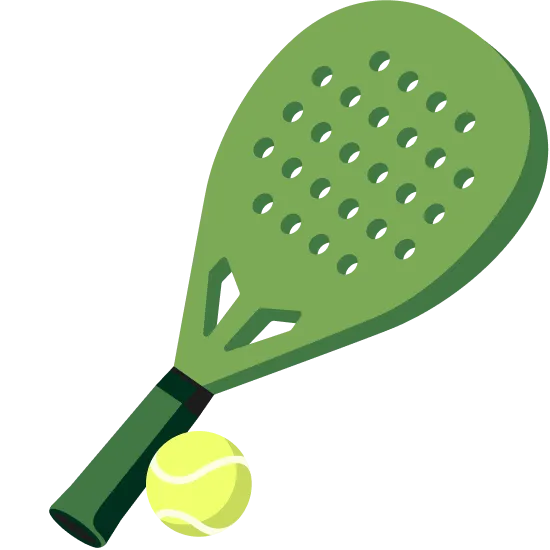Padel info
All about padel

Padel is a fast-paced, easy-to-learn racket sport that combines elements of squash and tennis. It’s the perfect mix of individual and team play. Strategy and collaboration matter more than raw power.

How do you play padel?
Players: 2x2
Padel is most often played with 4 players, in teams of 2 x 2. It is the perfect mix of individual and team sports, where tactics and coordination really matter.
Padel court
The court is 20 metres long and 10 metres wide, divided in the middle by an 88 cm high net.
It's similar to a tennis court, but smaller - and what makes it really special is the glass wall and metal mesh around it. These are not just for show: players use them actively, as the balls bouncing off the walls are in play just as in squash. That's what makes padel truly action-packed and exciting!
Padel rackets
It is played with a special racket: unlike tennis, the paddle racket is not stringed, but solid and perforated.
The typical weight of a racket is between 340 and 390 grams. Lighter rackets provide easier control, while heavier ones provide more power.
Although the most common is the teardrop shape, padel rackets can also be round or diamond-shaped, offering a different balance between power and controllability. The choice depends on your playing style, technique and how experienced you are on the court.
Padel ball
A padel ball is very similar to a tennis ball, but it is slightly smaller, lighter and has lower pressure - this makes it more flexible and bounces better, which makes the game even more dynamic.
Goal
The goal of padel is to get the ball onto your opponent's side so that they can't return it - that's how you rack up points.
You get the scores if the ball bounces twice on the ground on the opponent's side, or if you manage to hit the ball during the game so that it bounces off the court after it has touched the ground on the opponent's side.
Serving
The game starts with a serve from the back. The ball is hit diagonally across the opponent's court, just like in tennis. The server must allow the ball to bounce once before hitting the ball at waist height or below.
Valid serving:
The serve is valid if it bounces inside the opposite rectangle of the other side of the court and is either returned by the opponent or bounces one more time on the floor or wall.
Service failure, if:
- the ball bounces outside the opposite serving box
- stuck in the net
- bouncing off the wall or metal mesh, without hitting the floor first
- bounces first inside the opposite rectangle, but from there it bounces onto the metal mesh
In the event of an organ failure, a new organ can be fitted. If the second serve is also faulty, the opponent wins the point.
Scoring
To win the padel match, you need to win two sets. You win a set if you win 6 sets and won at least two more than your opponents (e.g. 6 - 4). If the score is 6 - 6, you have a tie break (see below).
Game scoring works in a similar way to tennis: 15 - 30 - 40 - game. You must also win the game by two. If the score is 40 - 40, you can use either the "Golden point" or the "Deuce" rule, as agreed.
Golden point: whoever scores the next point after 40 - 40, wins the game.
Deuce: if both teams reach 40 - 40, one team must win two points in a row to win the game. In this case the "advantage" is used.
Additional rules
- The ball can bounce once on the ground before it is hit back, but it can also be hit back directly without touching the ground.
- It is a foul if a ball that has passed over the net bounces first against the opponent's wall or metal net. In this case, the opponent wins the point.
- If the ball first bounces on the ground, it may then come into contact with the wall or metal net, and the player must return the ball from there.
- The wall on your own side can also be used: if you hit the ball first on your own wall and then it bounces off the opponent's wall, it is a valid shot.
- Do not strike the metal mesh directly.
- Only one player on a side can hit each ball once, then the other team.
Tie break
- If a set ends 6 - 6, a tie break is called.
- To win, you must score at least 7 points with a minimum 2-point lead (e.g. 8 - 6 or 9 - 7).
- If the score is close (e.g. 7 - 6), the game continues until one team draws a two-point difference.
- Tie break serving works differently than in normal play: the next server starts the tie break from the right side with a serve. The serve then alternates between the two teams after every two points.
- The tie-break is tense and dynamic, every point counts - and that's what makes it exciting!
+ Padel community
Padel isn’t just a sport – it’s a social experience.
Good company is just as much a part of the game as the exercise itself.
On and off the court, it’s easy to connect with others – meet new people and even form lasting friendships during a match.
At Padel Garden you can play sports, recharge and be part of an active community. Check out and join to one of our events, meet others and enjoy the game!
Would you like to play a padel match but you don't have the 4 players yet? No problem! If you join the Padel Garden WhatsApp community, you can easily find applicants who would like to join a padel. All you have to do is drop a message in the group for your skill level - write the date, time and how many people you are looking for. Have fun!
Join and play padel
Padel, riverside vibes and good energy - that's Padel Garden. Join in and enjoy the pace of the game on one of our 3 outdoor courts!

